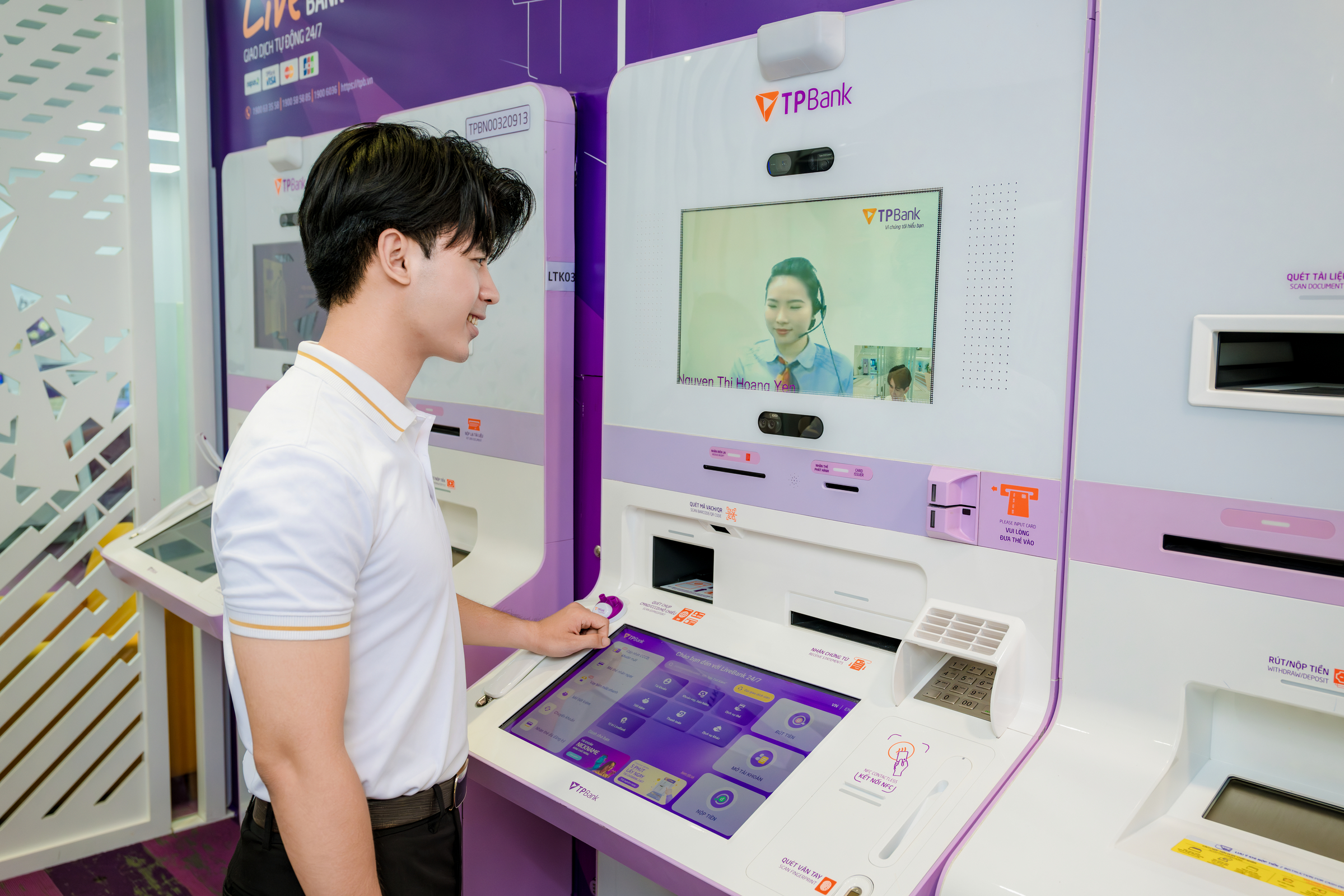An intellectual bank is a banking model that applies artificial intelligence (AI) and smart technologies such as big data, robotic process automation (RPA), and chatbots to operate efficiently, manage risks better, and create personalized experiences for customers.
To realize this goal, the bank invests in core technology infrastructure like AI, RPA, big data, and cloud computing. It also expands connectivity through the Open API platform, allowing for the integration of financial services into various ecosystems such as e-commerce, education, healthcare, and insurance.
 |
Customers can actively deposit and withdraw money with the eCM machine at the transaction counter without needing a teller. Photo: TPBank |
Customers can actively deposit and withdraw money with the eCM machine at the transaction counter without needing a teller. Photo: TPBank
Simplifying transactions
One of the notable features developed by TPBank is ChatPay, designed as a conversational interface within the banking app. Instead of filling in each information field traditionally, users only need to enter the amount and transfer content into the chat box. The system will automatically identify the recipient, suggest content, and complete the transaction.
The automatic recipient memory feature allows users to set memorable names for each contact for future transfers. It also displays transaction history for each person, helping users easily track the number of times and the total amount transferred.
ChatPay integrates AI to analyze context, identify behavior, and optimize operations based on usage habits, especially for young users. The feature aims to simplify daily financial operations like splitting bills and transferring money quickly without interrupting the digital experience.
 |
The new feature is optimized for young customers. Photo: TPBank |
The new feature is optimized for young customers. Photo: TPBank
In parallel, the bank also launched the Paste to Pay feature, which allows copying a text message containing transfer content into ChatPay on the TPBank app. After sending, the system will automatically identify, analyze, and fill in the necessary information to execute the transaction.
This solution utilizes optical character recognition (OCR) technology, AI language processing, and machine learning algorithms trained on millions of real transactions. According to TPBank, this is an improvement to help customers operate faster and limit errors.
Building a comprehensive digital ecosystem
Besides ChatPay and Paste to Pay, TPBank has developed the LiveBank 24/7 system, allowing customers to perform a full range of banking transactions outside of business hours. The bank is also expanding its presence on platforms like the Zalo mini-app, e-wallets, and payment gateways, helping users access services in familiar environments without needing to access a separate application.
 |
Customers connect directly with consultants through LiveBank 24/7 kiosks. Photo: TPBank |
Customers connect directly with consultants through LiveBank 24/7 kiosks. Photo: TPBank
According to Nguyen Hung, CEO of TPBank, each new feature is developed based on observing user behavior and predicting needs. The goal is for the bank not only to react to requests but to proactively be present at the right time and in the right context.
“TPBank aims to build an 'intellectual bank' - where AI and smart technologies are deeply applied to banking operations to improve efficiency, minimize risks, and provide a suitable experience for each customer,” Hung said.
Currently, more than 98% of transactions at TPBank are conducted through digital channels. According to a bank representative, what sets TPBank apart is its user-centric approach to product development, focusing on practical needs rather than creating features just to attract attention or follow technological trends.
TPBank identifies the "intellectual bank" as its long-term development orientation, where technology is the foundation for personalizing services, increasing operational efficiency, and improving user experience. This aims to build a smart and flexible financial ecosystem that meets the specific needs of each customer in the digital age.
Minh Ngoc












